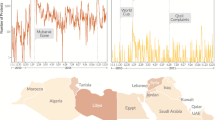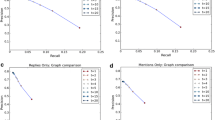Abstract
In the study of social media in sub-national politics, offline-bounded methods offer an attractive alternative to the current emphasis on content search. When cases are selected according to content, analysis suffers from nebulous content boundaries, reliance on samples instead of populations, missing relationship data, and a lack of distinction between members of different sets and groups. Sub-national political entities, in contrast, typically have clear and substantive boundaries set by formal membership rules in the offline environment. These features make questions of adoption and interconnection more feasible to address. This chapter makes use of the Twitter list feature and data-mining capabilities of R to understand social media adoption, in-group interaction, and between-group intersection among legislators, lobbyists, and business groups in the American state of Maine. We find that Twitter adopters are distinguished from non-adopters to varying degrees according to offline characteristics. Although rates of Twitter adoption are similar for all three groups, only Maine legislators appear to form an internal community of Twitter interaction. Maine lobbyists and business groups, by contrast, maintain political connection through communication with outsiders.
Access this chapter
Tax calculation will be finalised at checkout
Purchases are for personal use only
Similar content being viewed by others
References
Boyd, D., & Crawford, K. (2012). Critical questions for big data: Provocations for a cultural, technological, and scholarly phenomenon. Information, Communication & Society, 15(5), 662–679.
Bruns, A., & Burgess, J. E. (2011). The use of Twitter hashtags in the formation of ad hoc publics. In Proceedings of the 6th European Consortium for Political Research (ECPR) general conference, 27 August 2011, Reykjavik, Iceland.
Chi, F., & Yang, N. (2010). Twitter adoption in congress. Review of Network Economics, 10(1), 1–46.
ConnectME Authority. (2016). Detailed 2016–2018 strategic plan for broadband service in Maine. Retrieved June 10, 2017, from https://www1.maine.gov/connectme/about/docs/ConnectME%20Authority%20Strategic%20Plan%202016-2018.pdf.
Conover, M. D., Ratkiewicz, J., Francisco, M., Goncalves, B., Menczer, F., & Flammini, A. (2011). Political polarization on twitter. ICWSM, 133, 89–96.
Cook, J. M. (2016). Twitter adoption in U.S. legislatures: A fifty-state study. In Proceedings of the 7th 2016 International conference on social media & society, 11–13 July 2016, London, UK.
Cunha, E., Magno, G., Gonçalves, M. A., Cambraia, C., & Almeida, V. (2014). He votes or she votes? Female and male discursive strategies in twitter political hashtags. PLoS One, 9(1). https://doi.org/10.1371/journal.pone.0087041.
Driscoll, K., & Walker, S. (2014). Working within a black box: Transparency in the collection and production of big twitter data. International Journal of Communication, 8, 1745–1764.
Dubois, E., & Gaffney, D. (2014). The multiple facets of influence: Identifying political influentials and opinion leaders on twitter. American Behavioral Scientist, 58(10), 1260–1277.
Evans, H. K., Cordova, V., & Sipole, S. (2014). Twitter style: An analysis of how house candidates used twitter in their 2012 campaigns. PS: Political Science & Politics, 47(2), 454–462.
Feller, A., Kuhnert, M., Sprenger, T. O., & Welpe, I. (2011). Divided they tweet: The network structure of political microbloggers and discussion topics. ICWSM, 133, 474–477.
Gainous, J., & Wagner, K. M. (2014). Tweeting to power: The social media revolution in American politics. New York: Oxford University Press.
Gentry, J. (2016). Package ‘twitteR.’ Retrieved June 16, 2017, from https://cran.r-project.org/web/packages/twitteR/twitteR.pdf.
Goel, S., Watts, D. J., & Goldstein, D. G. (2012). The structure of online diffusion networks. In 13 th ACM conference on electronic commerce and web technologies, 4–8 June 2012, Valencia, Spain.
Golbeck, J., Grimes, J. M., & Rogers, A. (2010). Twitter use by the US Congress. Journal of the Association for Information Science and Technology, 61(8), 1612–1621.
Greenwood, S., Perrin, A., & Duggan, M. (2016). Social media update 2016. Pew research center. Retrieved March 14, 2017, from http://www.pewinternet.org/2016/11/11/social-media-update-2016/.
Gruzd, A., & Tsyganova, K. (2015). Information wars and online activism during the 2013/2014 crisis in Ukraine: Examining the social structures of pro-and anti-Maidan groups. Policy & Internet, 7(2), 121–158.
Handcock, M. S., & Gile, K. J. (2011). Comment: On the concept of snowball sampling. Sociological Methodology, 41(1), 367–371.
Himelboim, I., Smith, M. A., Rainie, L., Shneiderman, B., & Espina, C. (2017). Classifying twitter topic-networks using social network analysis. Social Media + Society, 3(1), 1–13.
Kirkland, J. H. (2011). The relational determinants of legislative outcomes: Strong and weak ties between legislators. The Journal of Politics, 73(3), 887–898.
Kossinets, G. (2006). Effects of missing data in social networks. Social Networks, 28(3), 247–268.
Kramer, A., Guillory, J., & Hancock, J. (2014). Experimental evidence of massive-scale emotional contagion through social networks. Proceedings of the National Academy of Sciences, 111(24), 8788–8790.
Lachlan, K. A., & Levy, D. R. (2016). BIRGing, CORFing, and Twitter activity following a political referendum: Examining social media activity concerning the 2014 Scottish independence vote. Communication Research Reports, 33(3), 217–222.
Lassen, D. S., & Brown, A. R. (2010). Twitter: The electoral connection? Social Science Computer Review, 29(4), 419–436.
Laumann, E. O., Marsden, P. V., & Prensky, D. (1989). The boundary specification problem in network analysis. In L. C. Freeman, D. R. White, & A. K. Romney (Eds.), Research methods in social network analysis (pp. 61–87). Fairfax: George Mason University Press.
Marthinussen, A. O. (2016). Analyzing the US election using Twitter and meta-data in R. Behavioural thinking. Retrieved June 16, 2017, from https://behaviouralthinking.com/2016/07/29/analyzing-the-us-election-using-twitter-and-meta-data-in-r/.
McPherson, M., Smith-Lovin, L., & Cook, J. M. (2001). Birds of a feather: Homophily in social networks. Annual Review of Sociology, 27, 415–444.
Mejova, Y., Srinivasan, P., & Boynton, B. (2013). GOP primary season on twitter: Popular political sentiment in social media. In Proceedings of the sixth ACM international conference on Web search and data mining, 4–8 February 2013, Rome, Italy.
Moran, C. T. (2013). Understanding Wisconsin legislators’ use of social media. Dissertation, University of Wisconsin-Milwaukee.
Peterson, R. D. (2012). To tweet or not to tweet: Exploring the determinants of early adoption of Twitter by house members in the 111th congress. The Social Science Journal, 49(4), 430–438.
Reingold, B., & Smith, A. (2014). Legislative leadership and intersections of gender, race and ethnicity in the American states. Social Science Research Network: SSRN 2487604. Retrieved from http://papers.ssrn.com/sol3/papers.cfm?abstract_id=2487604
Robins, G., Pattison, P., & Woolcock, J. (2004). Missing data in networks: Exponential random graph (p∗) models for networks with non-respondents. Social Networks, 26(3), 257–283.
Sala, J. F. A., Jones, M. P. (2012). The use of electronic technology and legislative representation in the Mexican and U.S. states: Nuevo León and Texas. Puentes consortium project. Retrieved January, 17, 2017, from https://www.researchgate.net/publication/303721951_The_Use_of_Electronic_Technology_and_Legislative_Representation_in_the_Mexican_and_US_States_Nuevo_Leon_and_Texas.
Savage, M., & Burrows, R. (2007). The coming crisis of empirical sociology. Sociology, 41(5), 885–899.
Shpayer, H. (2016). GovSM. Retrieved January 17, 2016, from http://www.govsm.com/.
Tufekci, Z. (2014). Big questions for social media big data: Representativeness, validity and other methodological pitfalls. In ICWSM ’14: Proceedings of the 8th international AAAI conference on weblogs and social media, 2–4 June 2014, Ann Arbor, Michigan.
U.S. Census Bureau (2016). American community survey 2015 data. Retrieved November 19, 2016, from http://factfinder.census.gov/.
Williams, C. B., Gulati, G. J., & DeLeo, R. A. (2013). The dissemination of social media to campaigns for state legislature: The 2012 New England case. Paper presented at the 2013 Annual meeting of the American Political Science Association, 29 August – 1 September 2013, Chicago.
Author information
Authors and Affiliations
Corresponding author
Editor information
Editors and Affiliations
Rights and permissions
Copyright information
© 2018 Springer International Publishing AG
About this chapter
Cite this chapter
Cook, J., Hill, C., Chase, J. (2018). From Offline Politics to Online Action: Social Media Adoption and Communication by the Legislators, Lobbyists, and Business Groups of Maine. In: Sobacı, M., Hatipoğlu, İ. (eds) Sub-National Democracy and Politics Through Social Media. Public Administration and Information Technology, vol 29. Springer, Cham. https://doi.org/10.1007/978-3-319-73386-9_10
Download citation
DOI: https://doi.org/10.1007/978-3-319-73386-9_10
Published:
Publisher Name: Springer, Cham
Print ISBN: 978-3-319-73385-2
Online ISBN: 978-3-319-73386-9
eBook Packages: Political Science and International StudiesPolitical Science and International Studies (R0)




